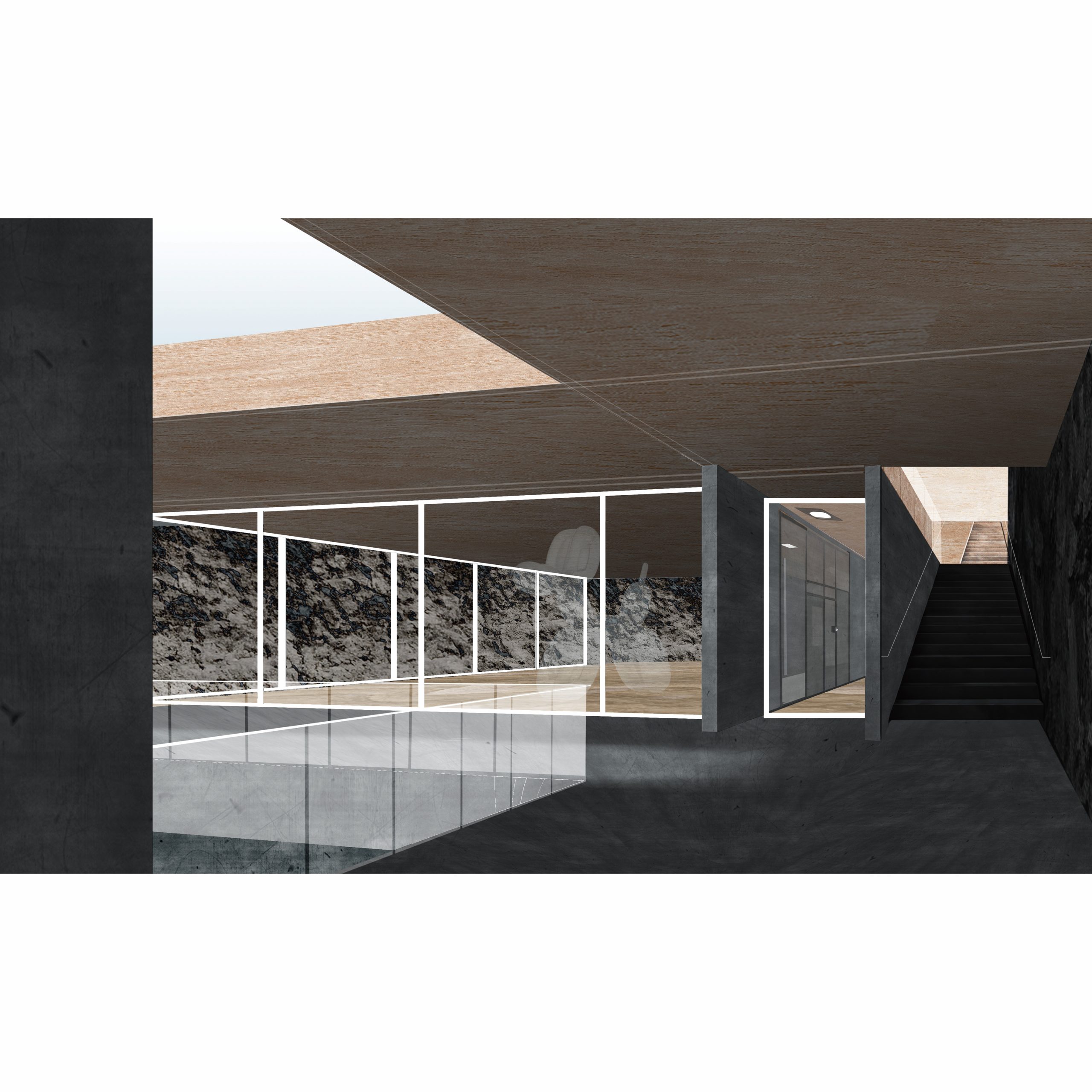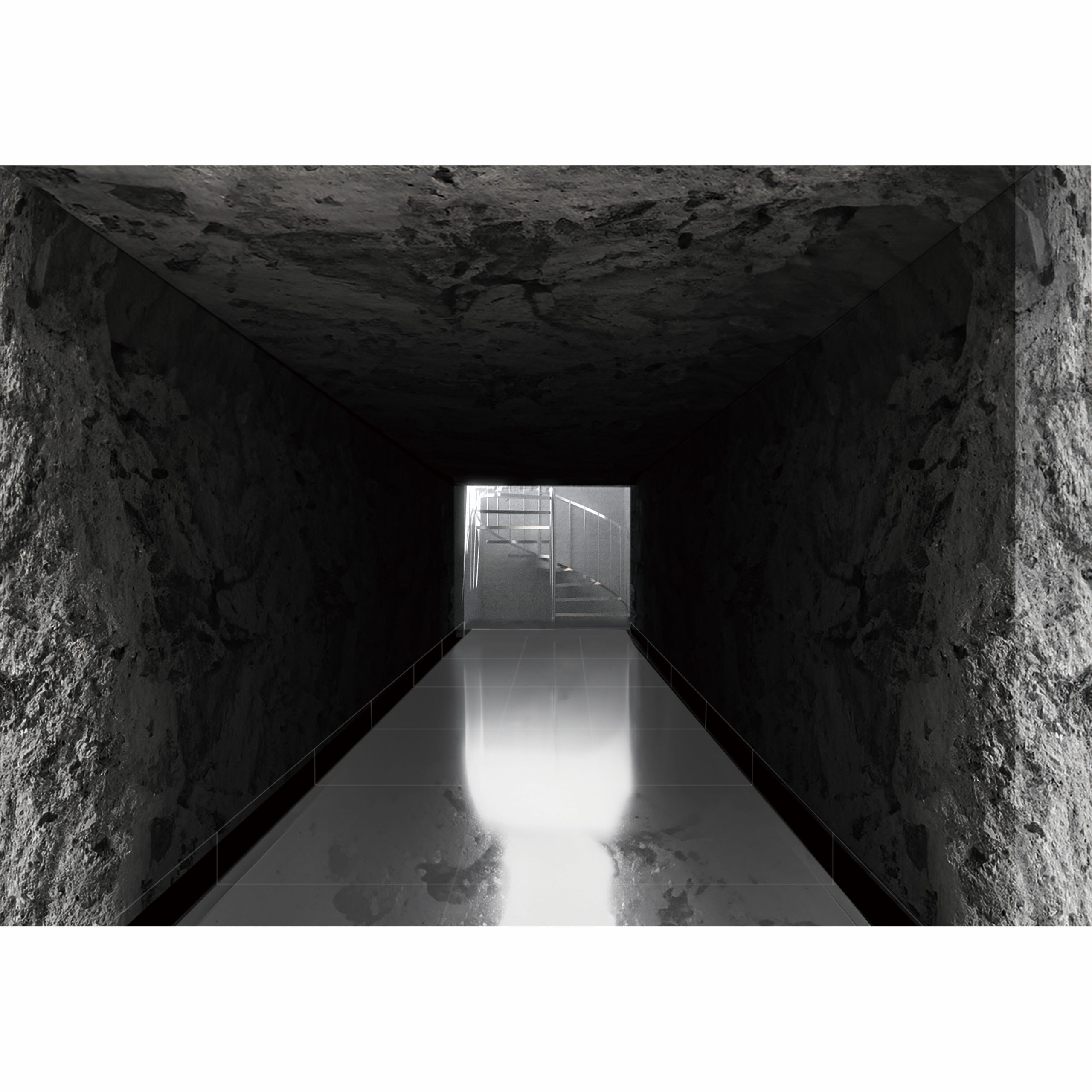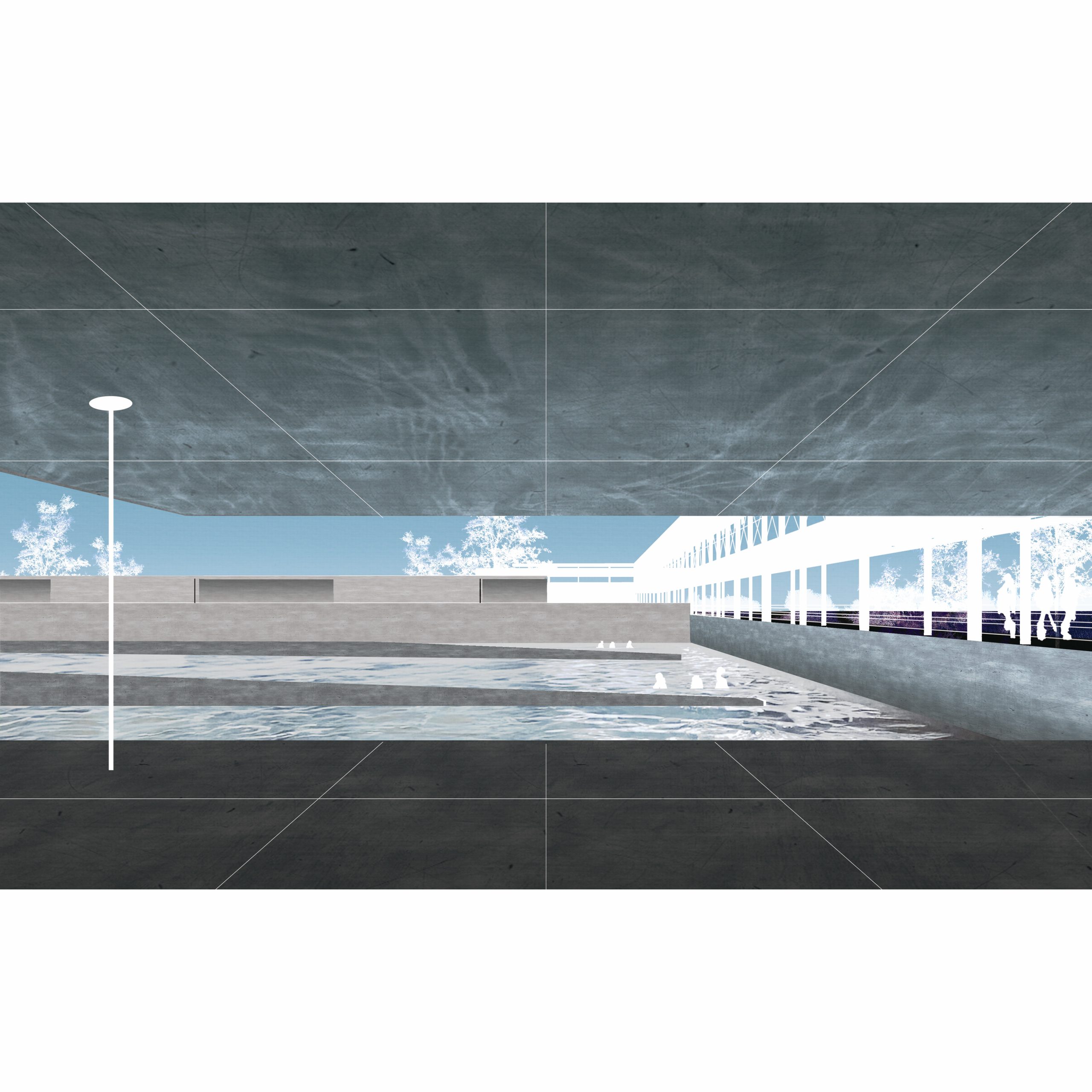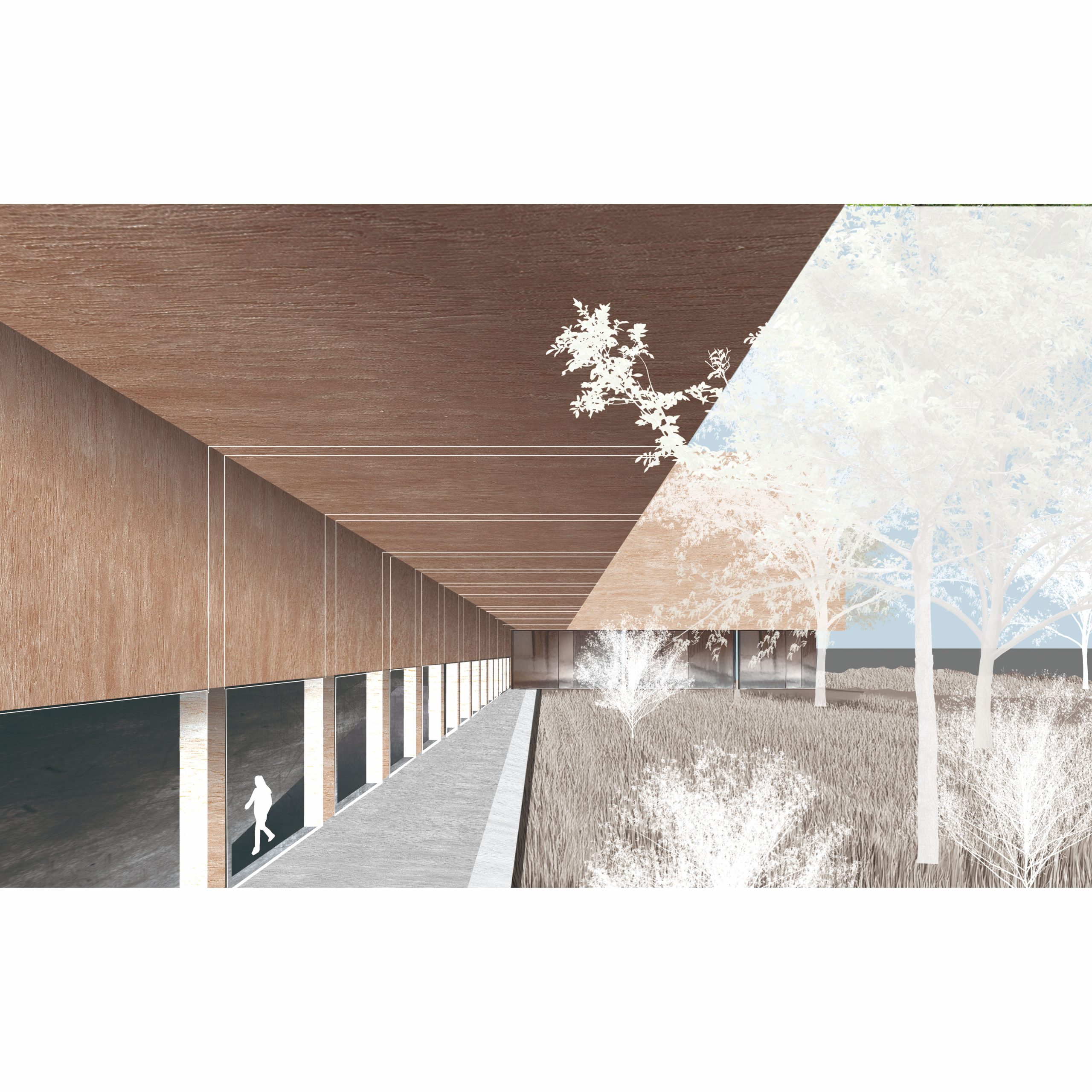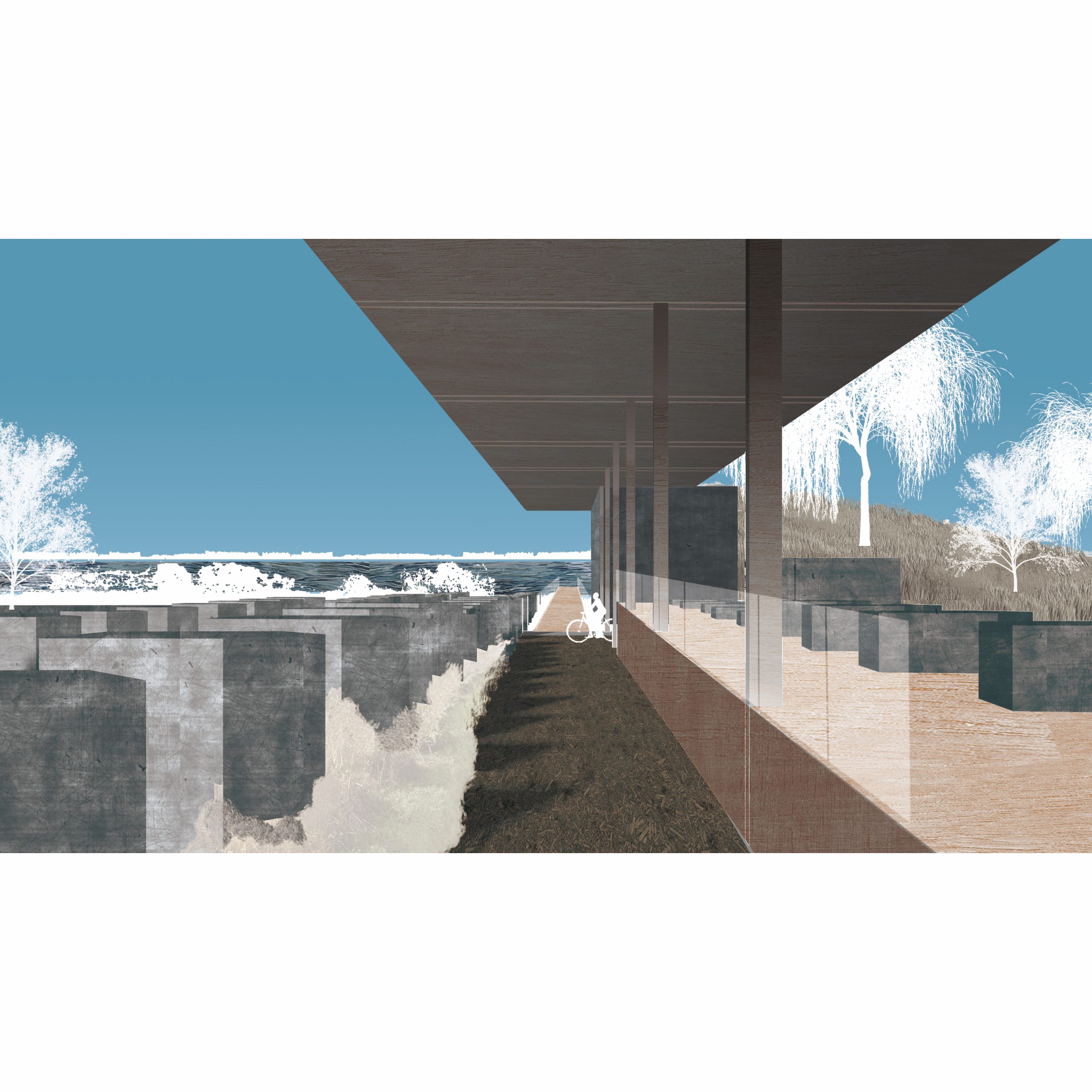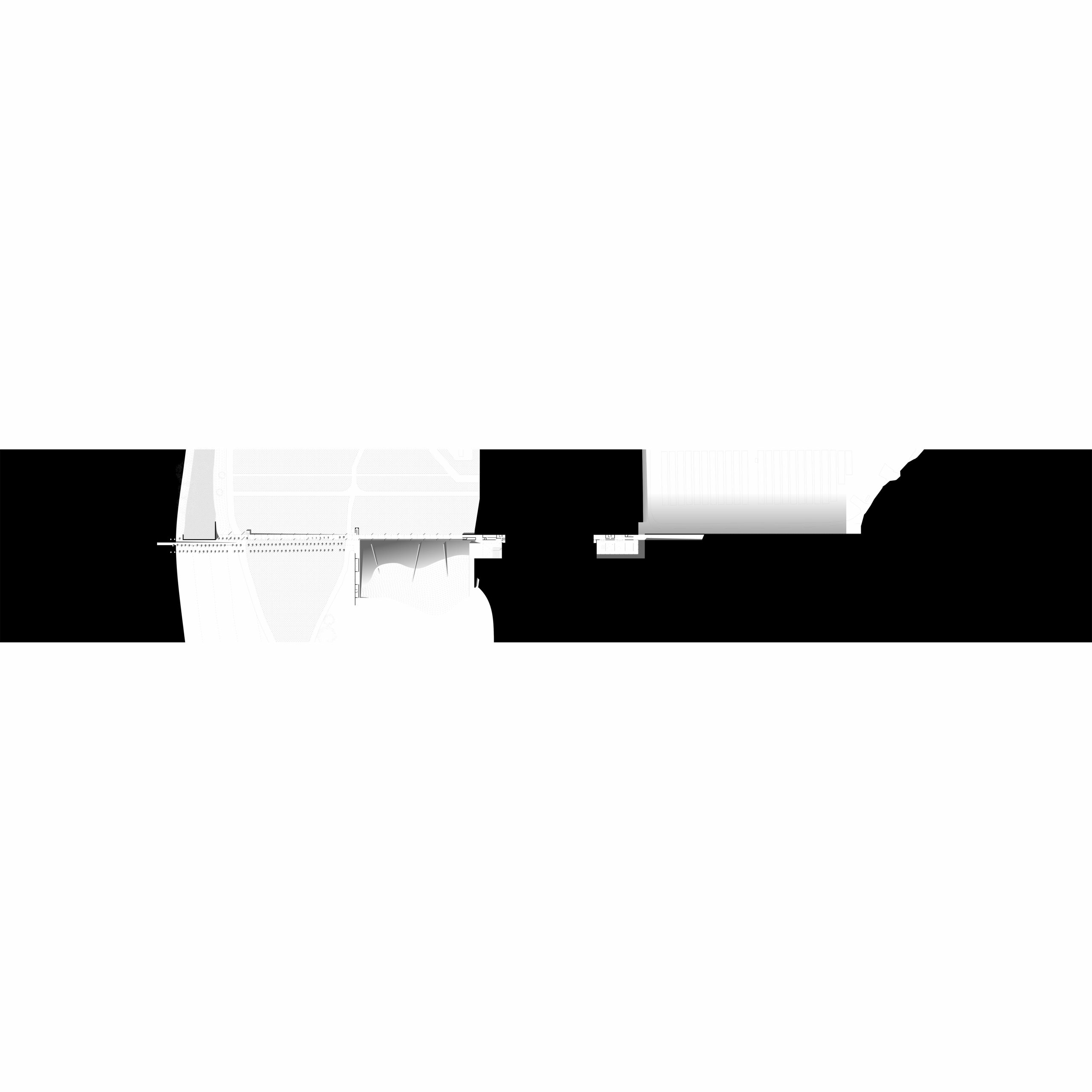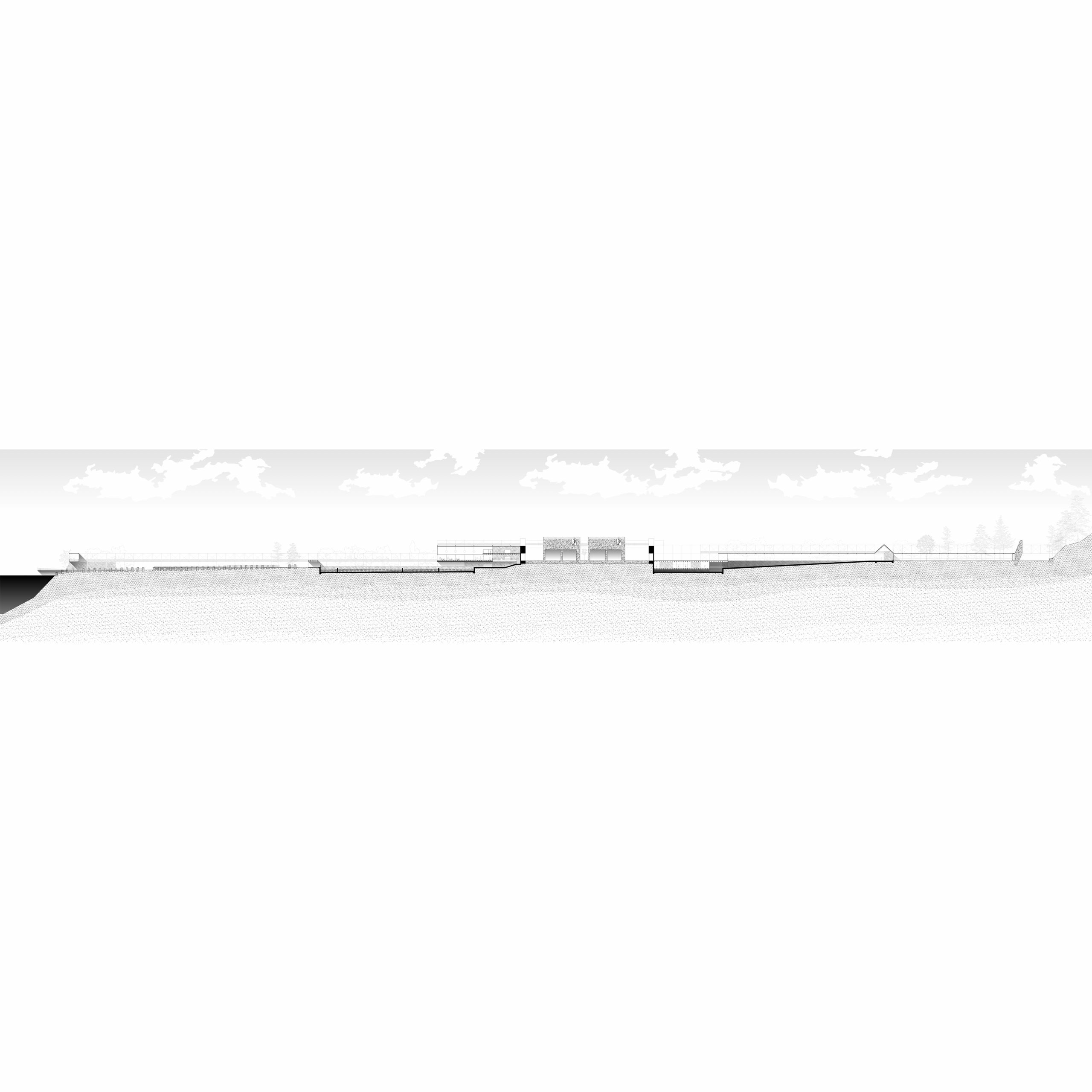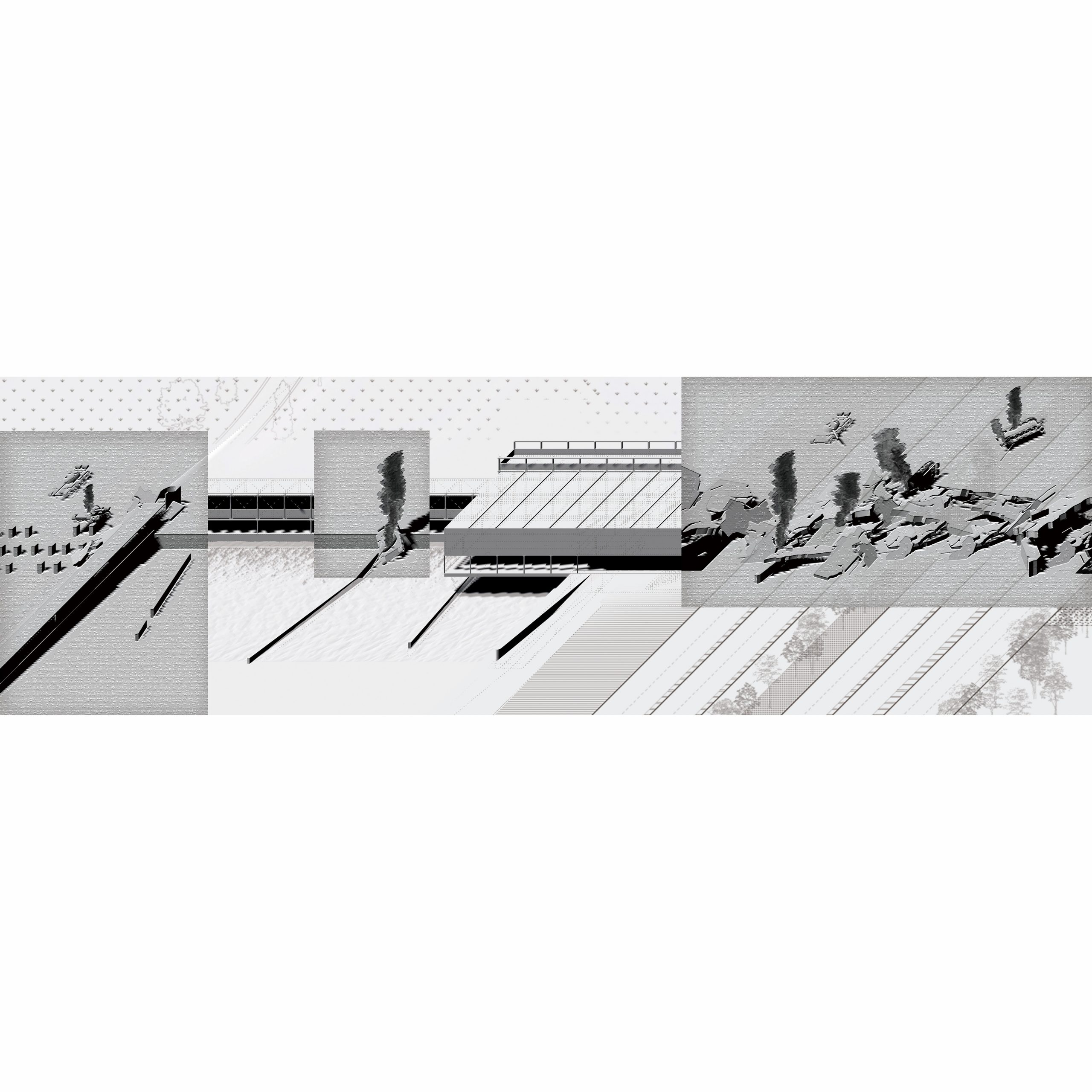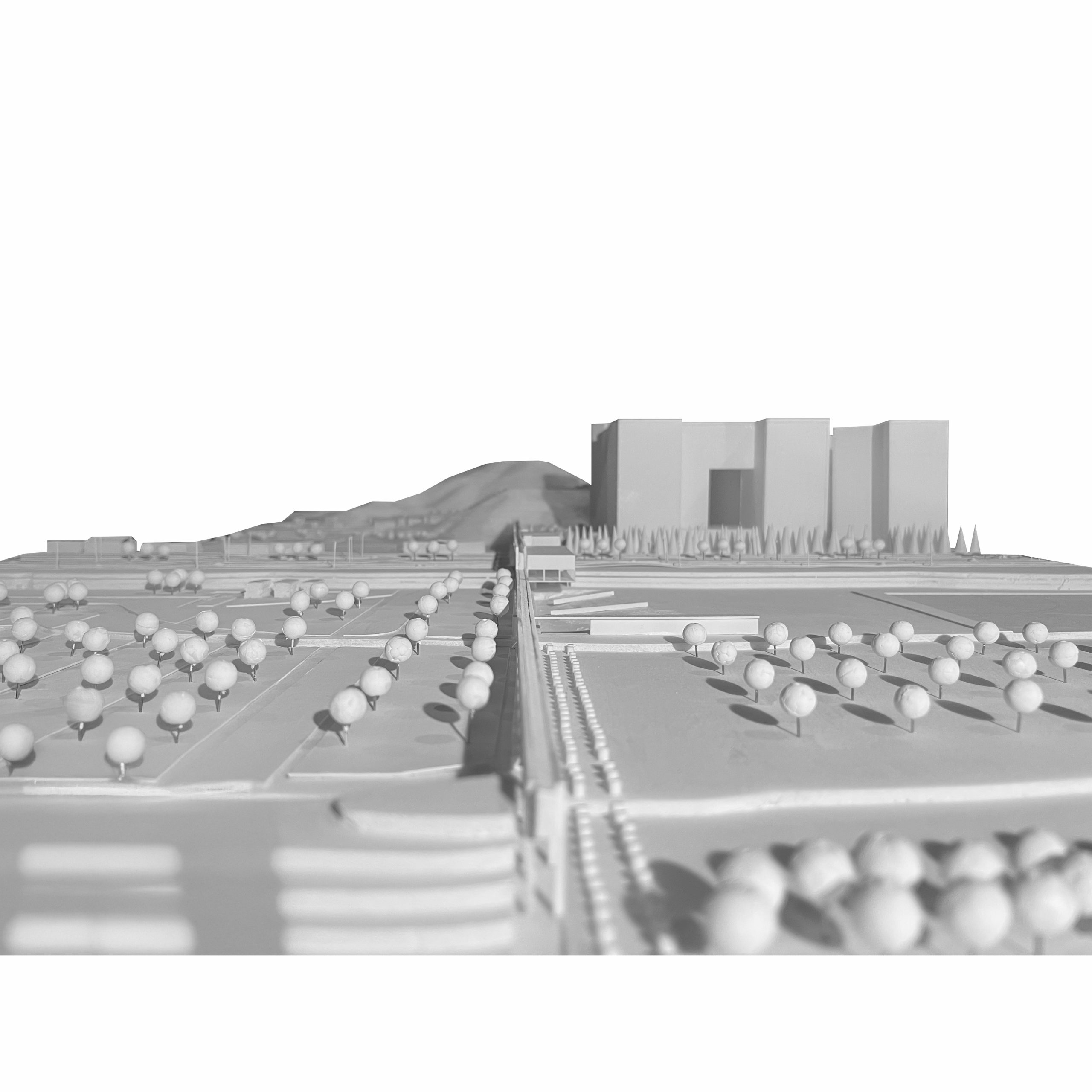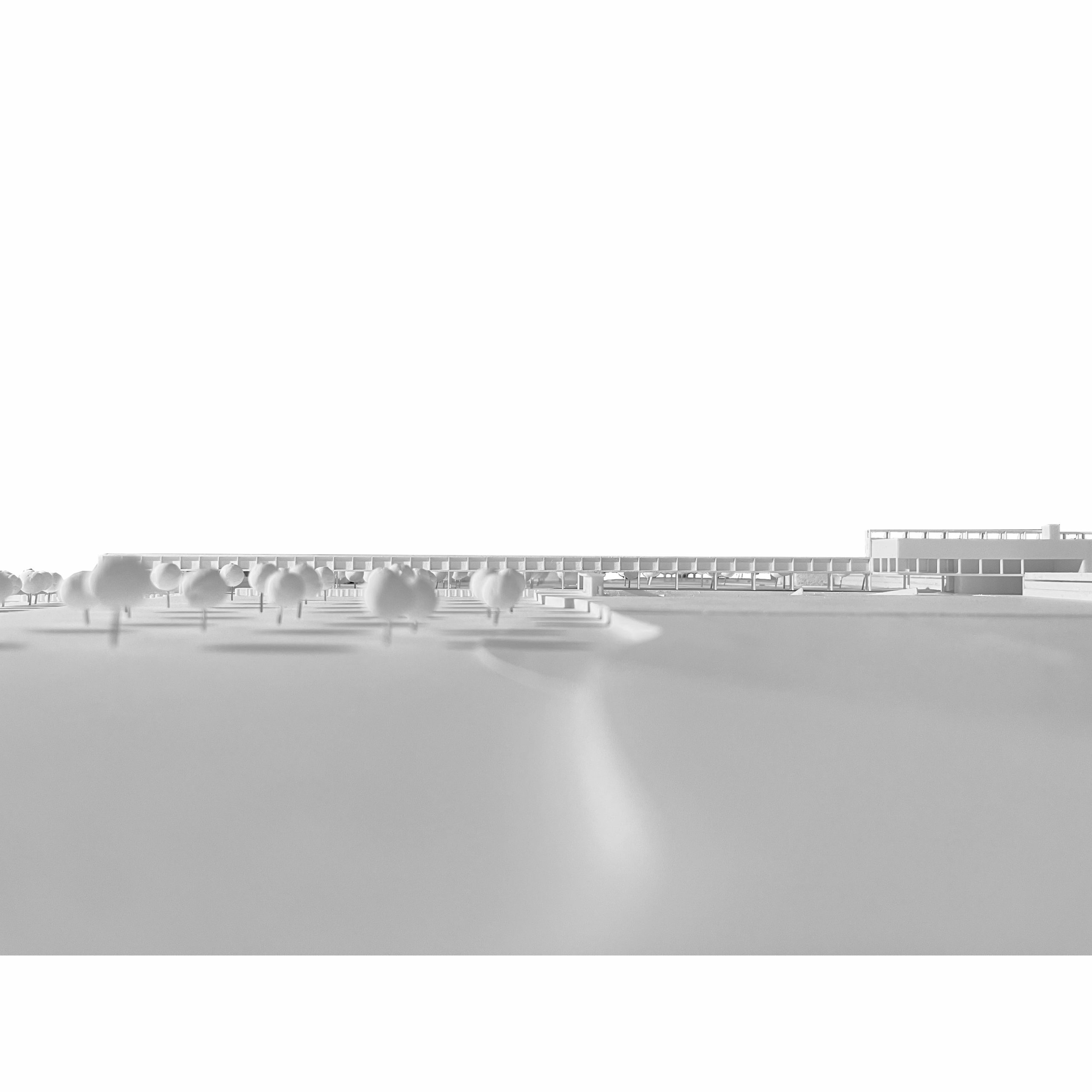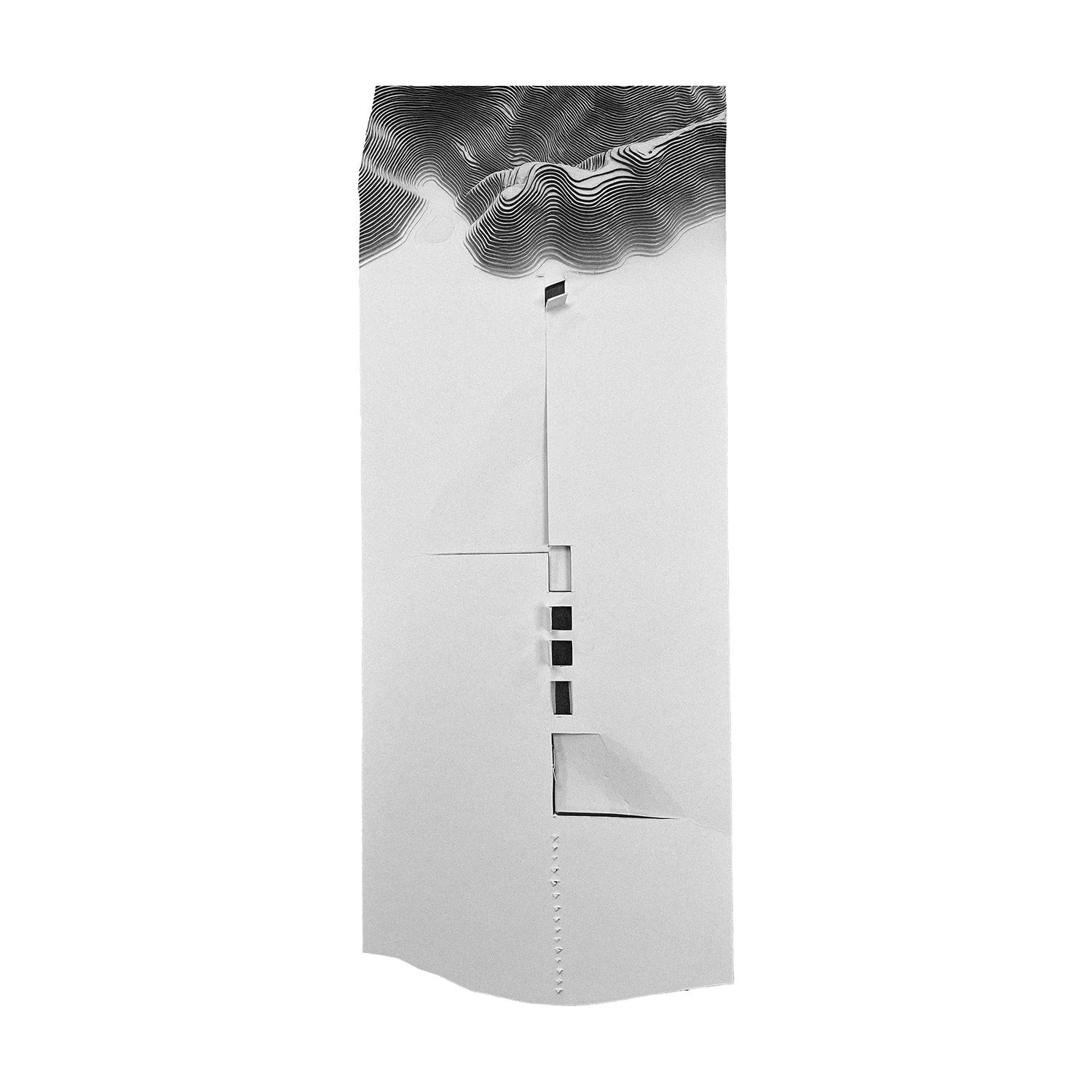신준규 _ (터지고 싶은)(터질 수 없는)(터질 일 없는)
프로젝트는 한국의 특정한 지정학적 현실 속에서 여전히 존재하는 군사 구조물의 이중성에 주목한다. 자유로를 가로지르는 550미터 길이의 대전차 방어선은 전시 상황을 전제로 한 기능적 구조물이지만, 일상적 현실 속에서 그 기능이 제거되거나 비가시화된 무용한 경계이다. 프로젝트는 이러한 구조물들의 건축적, 공간적 가능성 위에서 위기의 구조가 어떻게 일상 속에서 다시 해석될 수 있는지를 탐색한다.
프로젝트는 상실된 방어선의 기능을 회복시키며 시작한다. 땅을 깎아내고 파내는 지형적 조작을 통해 이를 달성하고, 그로 인해 형성된 독특한 땅의 상황 위에 갤러리, 수공간 등 평시적 프로그램을 삽입한다. 대지는 550미터의 작동하는 전시 방어선 위에 한강공원, 덕은뉴타운 등의 도시적 맥락에 대응하는 프로그램이 중첩된 모습으로 나타난다. 각 공간을 연결하는 가벼운 선형 구조물은 필요한 기능을 수용하는 동시에 주 동선으로 작동한다. 사용자의 공간 경험은 이 구조를 따라 ‘인지–관찰–체험–감각–해소’의 감각적 단계를 거치도록 구성되며, 무거운 콘크리트와 가벼운 목구조의 결합이라는 구도는 프로젝트의 정체성을 구축하는 건축적 전략으로 작동한다.
공원 가장자리에 위치한 리테일은 일상의 진입점이자, 지하 경사로를 통해 군사 구조물로 이어지는 첫 접점이다. 방어 기능을 위해 파낸 구덩이 속의 갤러리는 정제된 내부와 거친 콘크리트 사이의 대비를 통해 감각적 관찰을 유도하고, 낙석 구조 아래를 통과해 상부로 이어지는 전망 공간은 구조적 위협성과 도시적 풍경을 병치시킨다. 이어지는 수공간은 대전차 참호와 물의 만남을 통해 사용자의 체험을 확장시키며, 수변에 가까워질수록 선형적 질서는 분절되고 느슨해진다. 규정된 공간 요소들은 점차 해체되며, 시선은 공간 내부가 아닌 바깥으로 향하고, 강 너머 도시 풍경으로 확장된다.
프로젝트는 제거될 수 없는 위기의 구조와 평시의 감각을 중첩시킴으로써, 위기와의 공존이라는 현실을 담아낼 수 있는 건축을 제안한다. 지형적 조작과 선형 구조물의 개입은 방어선의 논리를 해체하는 것이 아닌 또 다른 질서와 감각을 덧입히는 방식으로 작동한다. 이는 ‘위기의 기념’도, ‘위기의 삭제’도 아닌, 위기와 일상이 병존하는 긴장된 조건에 대한 건축적 응답이다.
This project draws attention to the duality of military infrastructure that still exists within the specific geopolitical reality of South Korea. The 550-meter-long anti-tank defense line that cuts across the Jayu-ro expresses a functional structure premised on a wartime condition. Yet in everyday reality, its function has been either deactivated or rendered invisible—an obsolete boundary without active purpose. Positioned on the architectural and spatial potential of these structures, the project explores how the architecture of crisis can be reinterpreted within the framework of the everyday.
The project begins by reactivating the lost function of the defense line. Through topographic manipulations—cutting and excavating the terrain—it reestablishes the logic of defense, while overlaying peacetime programs such as a gallery and water space onto the newly formed land. The site emerges as a layered composition, where an actively structured wartime line intersects with contemporary urban contexts such as Hangang Park and Deogeun New Town. A lightweight linear wooden structure connects these interventions, accommodating required functions while also serving as a primary circulation spine. Spatial experience is composed through a sequence of perceptual stages—recognition, observation, engagement, immersion, and release. The juxtaposition between massive concrete elements and lightweight timber framing becomes a central architectural strategy that defines the identity of the project.
At the edge of the park, a retail space marks the threshold of everyday life and connects to the underground slope leading toward the military structure. The sunken gallery, embedded into excavated terrain, invites sensory observation through its contrast between refined interior surfaces and rough concrete masses. The observatory, reached by passing beneath a rockfall structure, juxtaposes structural threat with open views of the urban landscape. The subsequent water space, shaped by the anti-tank trench and filled with water, expands the user’s experience through bodily engagement. As one approaches the riverfront, the linear order of the architecture begins to dissolve—defined elements become increasingly fragmented and porous. The gaze is no longer held within the space, but released outward—toward the surrounding landscape and the city beyond the river.
Rather than erasing or memorializing the structure of crisis, the project proposes an architecture that overlays the enduring logic of conflict with the sensory and spatial qualities of peacetime. Through the manipulation of terrain and the insertion of lightweight structures, it does not dismantle the defensive logic but overlays it with a new set of spatial and perceptual orders. It is not a monument to crisis, nor an act of erasure—but an architectural response to the tense coexistence of crisis and everyday life.
